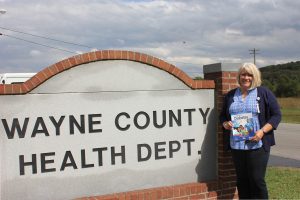The Bright Spots identification process laid the foundation for the initiative’s next step: exploring local approaches that may be replicated in other communities to help build better health outcomes. The case studies below explore health-promoting practices in 10 of the 42 Appalachian counties identified as Bright Spot communities.
Field work for the case studies revealed several common themes in the communities’ health efforts that may contribute to better-than-expected health outcomes, including community leadership, cross-sector collaboration, and a tradition of resource sharing.
Explore the 10 individual Bright Spot case studies below, or download the collected case studies (PDF, 20MB).
The Bright Spot community case studies identify local activities, programs, and values that may be associated with better-than-expected health outcomes. They provide an overview of the communities, a deeper look at community strengths, and observations about the communities’ unique culture of health.
Hale County, AL
Located in Alabama’s rural Black Belt, Hale County struggles with poverty, but it is also home to innovative nonprofits and creative collaborations reimagining how to improve community health and well-being.
McCreary County, KY
The only Kentucky county without an incorporated city, McCreary County is a place where everyone knows everyone. Despite living in one of the poorest counties in the state and the country, McCreary residents harbor a sense of hope for untapped potential.
Wayne County, KY
Originally carved from parts of adjacent Pulaski and Cumberland Counties, Wayne County lies at the south-central Kentucky crossroads of the Appalachian Coalfields, Bluegrass, and Pennyrile regions, with its southernmost boundary nestled against Tennessee.
Noxubee County, MS
Located near the southernmost point of the Appalachian Region, Noxubee County is quiet and sparsely populated, with 100 churches and no stoplights. Many families grow vegetable gardens, and there are a variety of roadside farm stands where local farmers sell fruits and vegetables from the back of their pickup trucks.
Madison County, NC
Madison County, North Carolina, sits just 20 minutes away from the eclectic arts community and thriving tourist destination of Asheville, North Carolina. Like its well-known neighbor, Madison County is nestled in the Blue Ridge Mountains, offers stunning scenery, miles of hiking trails, and a rooted music community.
Tioga County, NY
Anchored in the north by New York’s Finger Lakes and divided in the south by the broad, meandering Susquehanna River, Tioga County is home to green rolling hills, hardwood forests, fertile farmland, and wide-open spaces.
Potter County, PA
Surrounded by mountains and forestland, Potter County, Pennsylvania, is described in tourism materials as “God’s Country.” This rural community with an estimated population of just over 17,000 is tucked into the northern Appalachian Mountains.
Sequatchie County, TN
Located in the Sequatchie Valley—which is known for its beautiful landscape and moderate climate—the county is home to a growing number of affluent retirees and urbanites from other states who are attracted to the area’s natural amenities and proximity to Chattanooga.
Grant County, WV
Filled with opportunities for hiking, rock climbing, and countless other outdoor-recreation activities, Grant County is described in tourism materials as the “Heartbeat of the Potomac Highlands.” Many long-time residents of this mountainous Appalachian county would agree that the land exudes a sense of health and vitality.
Wirt County, WV
When residents of Wirt County, West Virginia, say they know everyone living nearby, they are not exaggerating. It takes 30 minutes to drive across the county, and there are no stoplights anywhere. What Wirt County lacks in size and resources, it makes up for with a way of life centered on community giving and collaboration.



















